If you’re looking for an eco-friendly, cost-effective, and unique housing option, look no further than Cob Houses. These sustainable structures are becoming increasingly popular due to their numerous benefits and eye-catching designs. In this article, we’ll explore the world of cob houses and share seven inspiring design ideas to spark your creativity.
What is a Cob House?
A cob house is a natural building made from clay, sand, straw, and water. The term “cob” comes from an Old English word meaning “lump,” which refers to the building material’s consistency. They have been around for centuries, and they can be found in various cultures across the globe.
Advantages of Cob Houses
As more people become environmentally conscious and seek sustainable housing options, they have become popular and attractive. These unique homes, made from clay, sand, straw, and water, offer many advantages that cater to various needs and preferences. In this section, we’ll delve into the numerous benefits, from energy efficiency to affordability, that make them an ideal choice for those seeking an eco-friendly and cost-effective living space.
Energy Efficiency
Cob houses are known for their excellent thermal mass, which means they can store heat during the day and release it slowly at night. This natural insulation makes Cob homes energy efficient and comfortable, regardless of the season.
Affordability
Building it can be significantly less expensive than traditional construction methods. In addition, the materials are often locally sourced and inexpensive, making them an attractive option for those on a budget.
Eco-Friendliness
They are environmentally friendly, as they use natural, sustainable materials. Additionally, they have a low carbon footprint because they require minimal energy for heating and cooling.
Fire Resistance
Due to the high clay content in the cob mixture, these houses are fire-resistant, making them a safe option for those living in areas prone to wildfires.
Here are six cob house examples that will totally wow you:
Mayne Island Cob Cottage
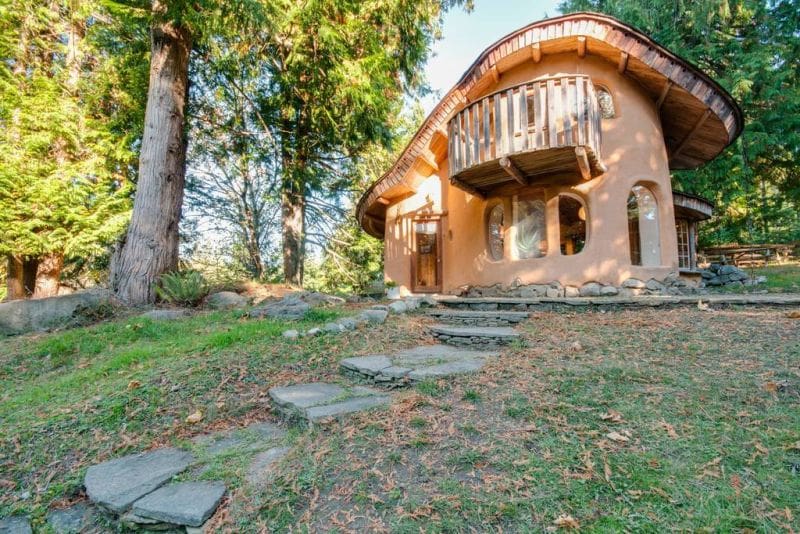
This two-story mushroom-shaped cob house built in 1999 on Mayne Island, British Columbia, is a sustainable abode worth drooling over. Thanks to the well-placed windows, it is erected in a way that allows maximum daylight inside.
The interiors are beautifully planned with soft-toned colors for a warm feel. The dwelling has everything you need for a comfortable stay, and thankfully it is also listed on Airbnb for renting.

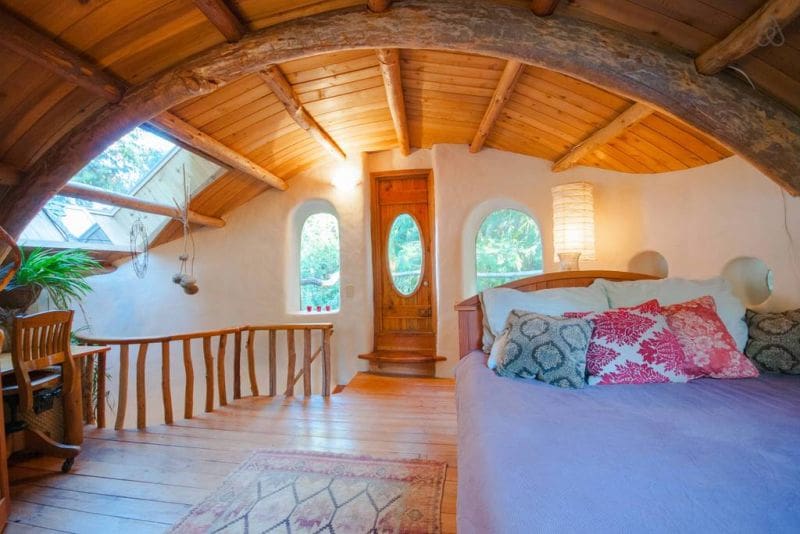


Mud And Wood – Feil Butler Cob House

Architect Feile Butler and her carpenter husband Colin Ritchie decided to make their own cob house after going for a ten days mud building course in 2005. It took them almost three years to finally come up with this beautiful two-story mud house. The house has a modern touch on the inside, with furniture and appliances that go very well with the wooden theme.



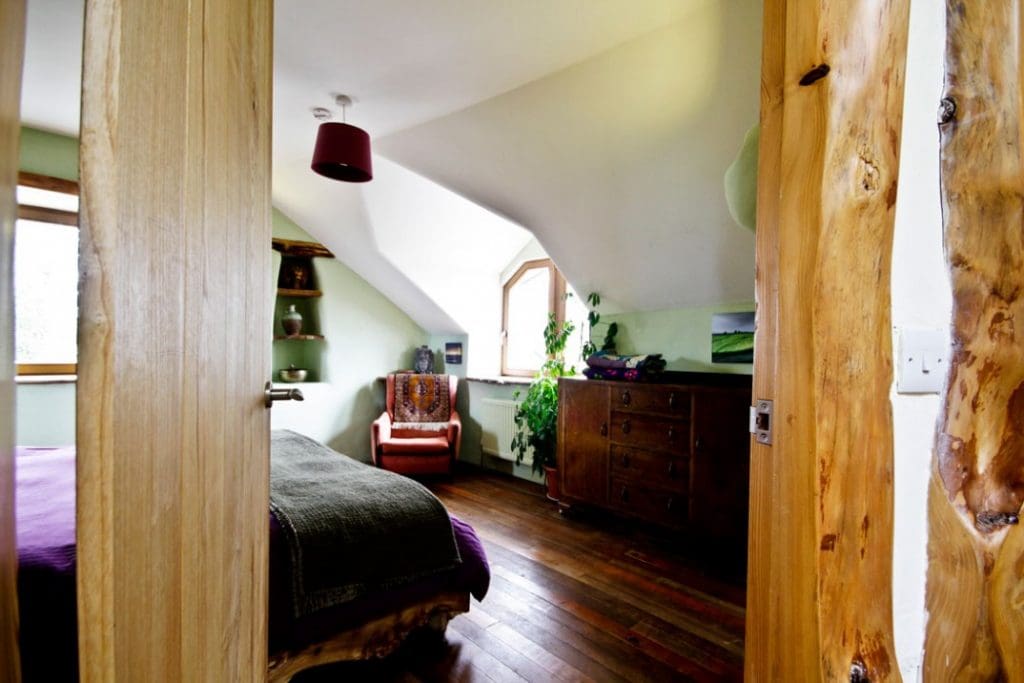
Michael Buck Cob House
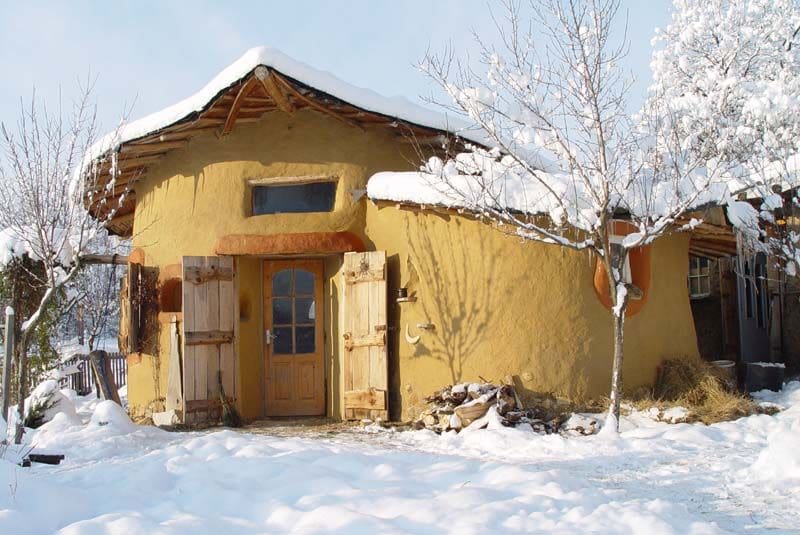
Michael Buck, a farmer and retired teacher, built this authentic cob house without using any power tools. Instead, he constructed the one-room mud house over eight months on a budget of just $250. With no prior experience, Michael relied on books to guide him through the project, resulting in a surprisingly appealing outcome.
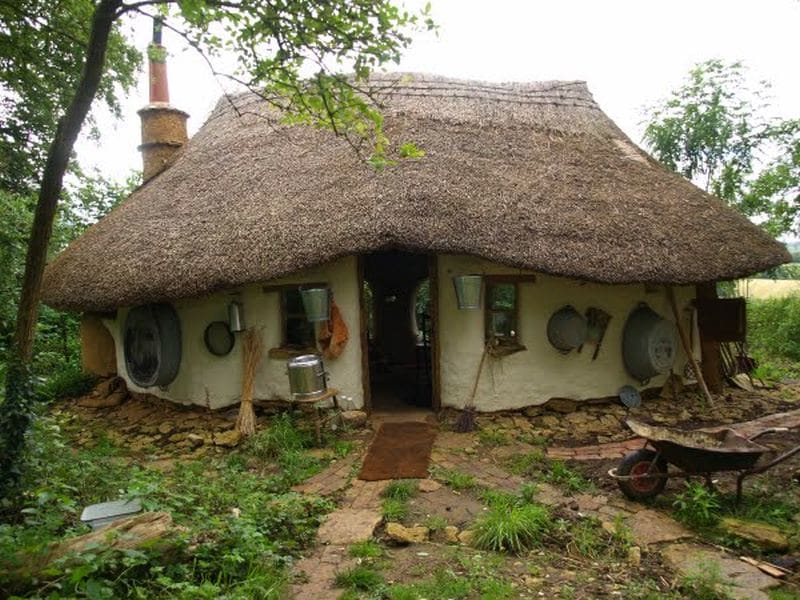
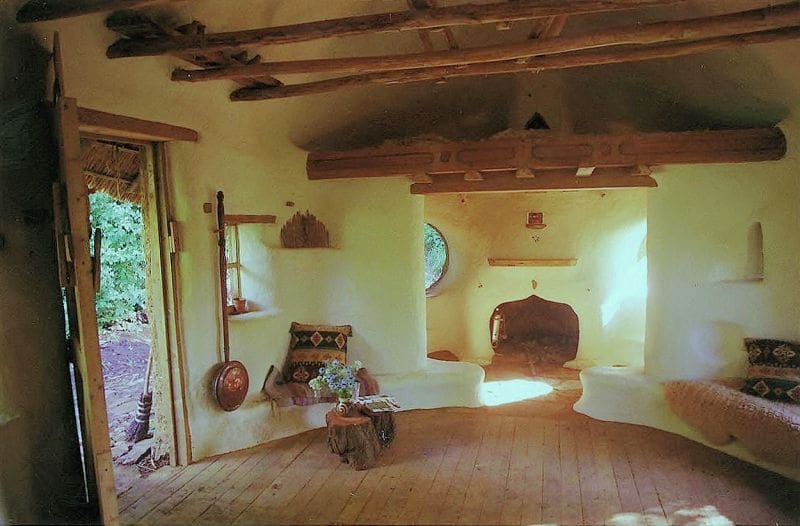

Laughing Cob House

Built entirely with local organic materials, this eye-catching cob house in the Oregon woodland near Coquille, OR, USA, captivates onlookers. Ianto and Linda from Cob Cottage Company designed and named it the Laughing House. They crafted the interiors intricately to match the overall theme. This stunning two-story cob house inspires those who desire an eco-friendly life surrounded by nature.

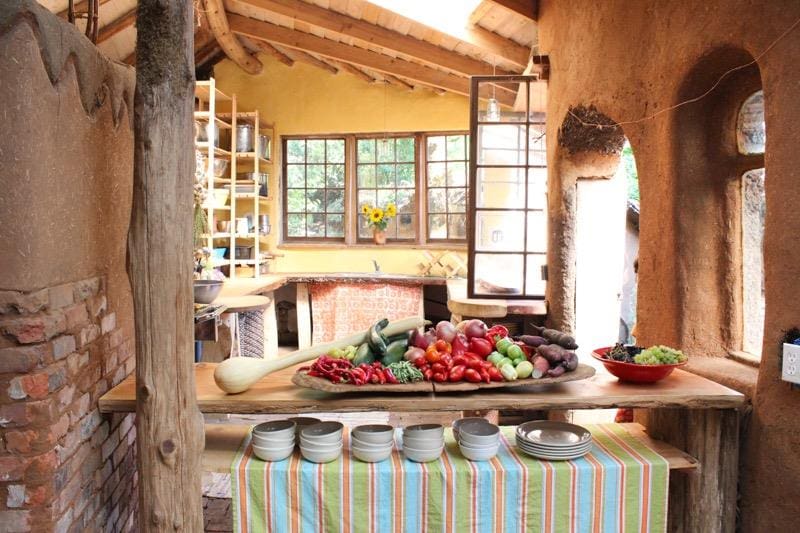


Goatling Cob House

Lisa and Rich skillfully built their unique cob house with mud from a close stream and materials like Roundwood pine and hawthorn from nearby forests. Situated in the beautiful countryside of Somerset, England, it has walls that display impressive craftsmanship. The cedar-shingled roof adds a modern touch, and the captivating windows create a magical atmosphere.



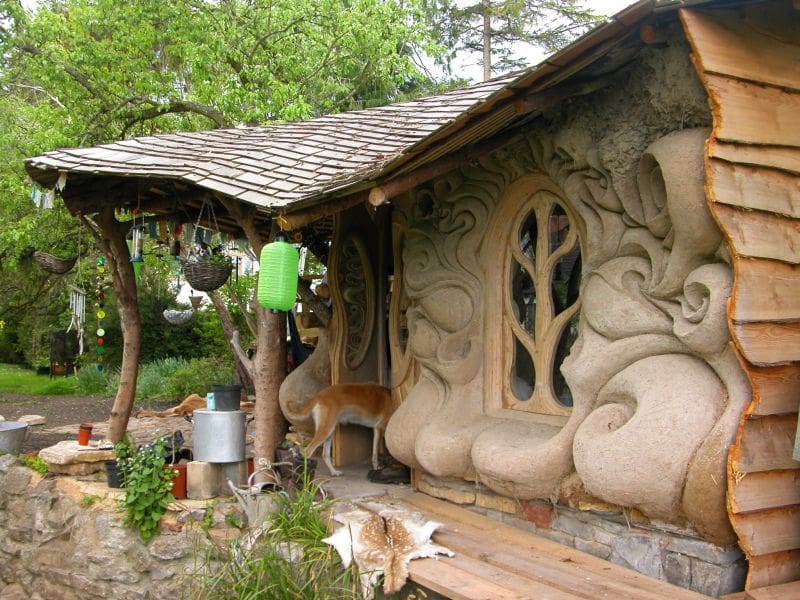
Cob Guest House

The cob guest house was built in 2005 by Don and Shanti McDougall on a pasture of their organic farm on Mayne Island, B.C.; this minimalist tiny house has a whole wooden roof that extends on all sides to give it ultra-protection from harsh weather conditions.
A portion of the inside components is made from a cob-like couch in the lounge; otherwise, wooden furniture and plenty of light entering through the expansive windows give this tiny house a charming appeal.
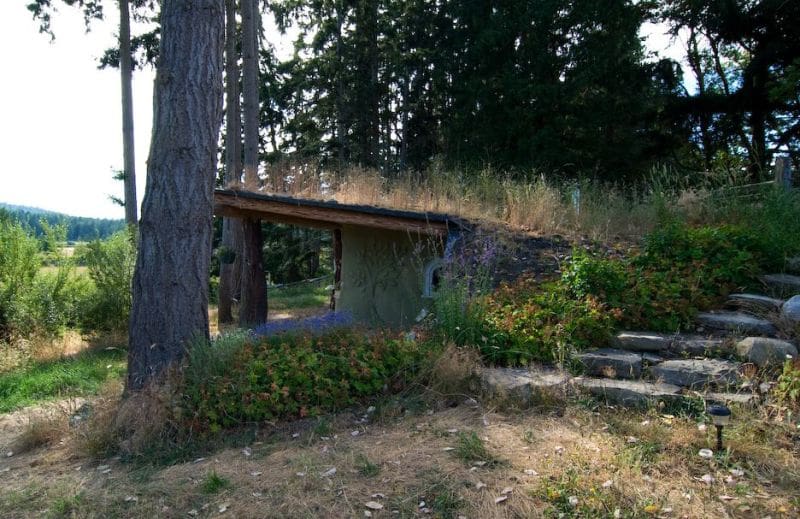
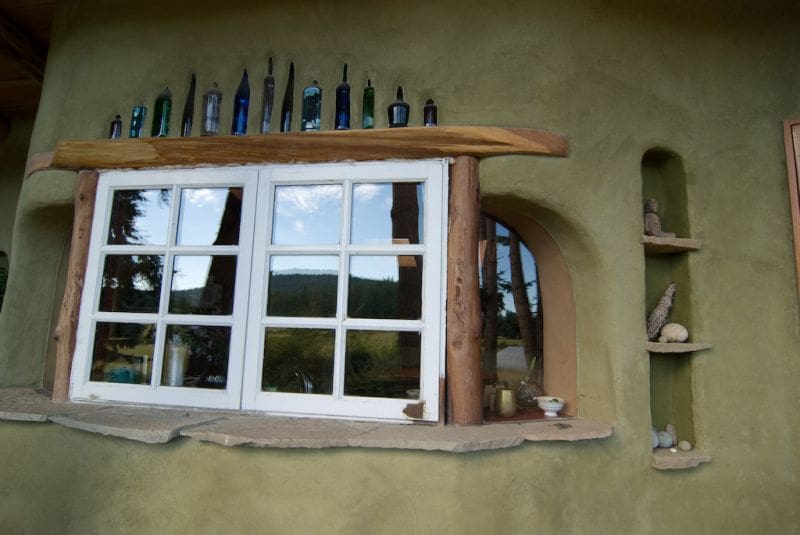



Types of Cob Houses
Now that you’ve seen some examples of beautiful and eco-friendly cob houses, we’ll delve into seven types of cob houses that showcase the diversity and adaptability of this natural building technique. From charming traditional cottages to sleek modern designs, these inspiring examples demonstrate that it can cater to various preferences and lifestyles. So let’s explore these unique and sustainable living spaces that combine creativity with environmental responsibility.
Traditional Cob Cottage
A traditional cob cottage features a simple, cozy design, curved walls, and a thatched roof. These cottages often include small windows, wooden doors, and a rustic interior that exudes warmth and charm.
Key Features:
- Curved walls
- Thatched roof
- Small windows
- Wooden doors
- Rustic interior design
Modern Cob House
A modern cob house combines the eco-friendly benefits of cob with contemporary design elements. This could include large glass windows, clean lines, and open-concept living spaces. The result is a unique, sustainable home with style and function.
Key Features:
- Contemporary architectural design
- Large glass windows
- Clean lines
- Open-concept living spaces
Two-Story Cob House
While they are often single-story structures, it is possible to build a two-story one. This design offers more living space while maintaining a traditional cob home’s energy efficiency and charm. However, building a two-story cob house requires additional structural support and careful planning.
Key Features:
- Two-story structure
- Additional structural support
- Careful planning and design
- Increased living space
- Energy efficiency
Earthship Cob House
An Earthship house combines cob construction with Earthship principles, such as passive solar design, rainwater harvesting, and built-in greenhouses. This type is ideal for those seeking a self-sufficient, off-grid lifestyle while enjoying cob construction’s benefits.
Key Features:
- Incorporation of Earthship principles
- Passive solar design
- Rainwater harvesting systems
- Built-in greenhouses
- Off-grid living capabilities
Cob Tiny House
It is perfect for those who want to live in a small, eco-friendly space. These compact homes can be customized to fit your specific needs and preferences. With a tiny house, you can enjoy the benefits of sustainable living without sacrificing comfort or style.
Key Features:
- Compact and efficient design
- Customizable layout
- Eco-friendly construction materials
- Minimalistic living
- Reduced environmental footprint
Green Roof Cob House
It features a living roof with grasses, flowers, and even small trees. This unique design element provides additional insulation, improves air quality, and creates a natural habitat for birds and insects. A green roof also adds a touch of beauty and serenity to your cob home.
Key Features:
- Living roof with vegetation
- Enhanced insulation
- Improved air quality
- A natural habitat for birds and insects
- Aesthetic and functional design
Cob House with Straw Bale Insulation
Combining cob construction with straw bale insulation creates a highly energy-efficient and comfortable living space. The thick straw bale walls provide excellent insulation, while the cob material adds thermal mass and structural support. This design is perfect for those seeking a sustainable home with superior energy performance.
Key Features:
- Combination of cob construction and straw bale insulation
- Superior energy performance
- Thick straw bale walls
- Excellent insulation and thermal mass
- Sustainable building materials
Building Your Own Cob House
Sourcing Materials
To build a cob house, you must source the necessary materials, such as clay, sand, straw, and water. Choosing high-quality materials is essential to ensure the longevity and performance of your cob home. In addition, you should use locally sourced materials to minimize your environmental impact.
Workshops and Courses
If you’re interested in building your own cob house, consider attending a workshop or enrolling in a course to learn the necessary skills and techniques. In addition, many organizations offer hands-on training, allowing you to gain valuable experience before starting your cob house project.
Conclusion
Cob houses offer a unique and sustainable approach to building that blends functionality, creativity, and environmental consciousness. From incorporating recycled materials and passive solar design to incorporating artistic elements, there are countless ways to make a design as beautiful as it is practical. So whether you’re looking to downsize, reduce your carbon footprint, or embrace a more straightforward way of life, a cob house might be the perfect solution. With its many benefits and endless design possibilities, it’s no wonder they continue to capture the imagination of homeowners and architects alike.
How long do cob houses last?
Cob houses can last for centuries if properly maintained. Regular maintenance includes applying a new coat of natural plaster to protect the walls from moisture and ensuring the roof remains watertight.
Can they be built in any climate?
Cob houses can be built in various climates but perform best in moderate temperatures and low-humidity areas. Additional insulation and moisture protection measures may be necessary for colder or wetter climates.
Are they safe in earthquake-prone areas?
Cob houses have a certain level of flexibility, which can make them resistant to minor earthquakes. However, additional structural reinforcements may be necessary to ensure safety for areas with a high risk of earthquakes.
Can I add modern amenities to my Cob house?
You can add modern amenities like plumbing, electrical, and solar panels. Therefore, planning and incorporating these features during the construction process is essential.
Do I need a building permit to construct a cob house?
Building permit requirements vary depending on your location. Therefore, it’s crucial to consult your local building department.


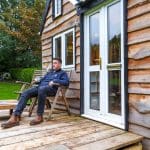
Comments
Loading…